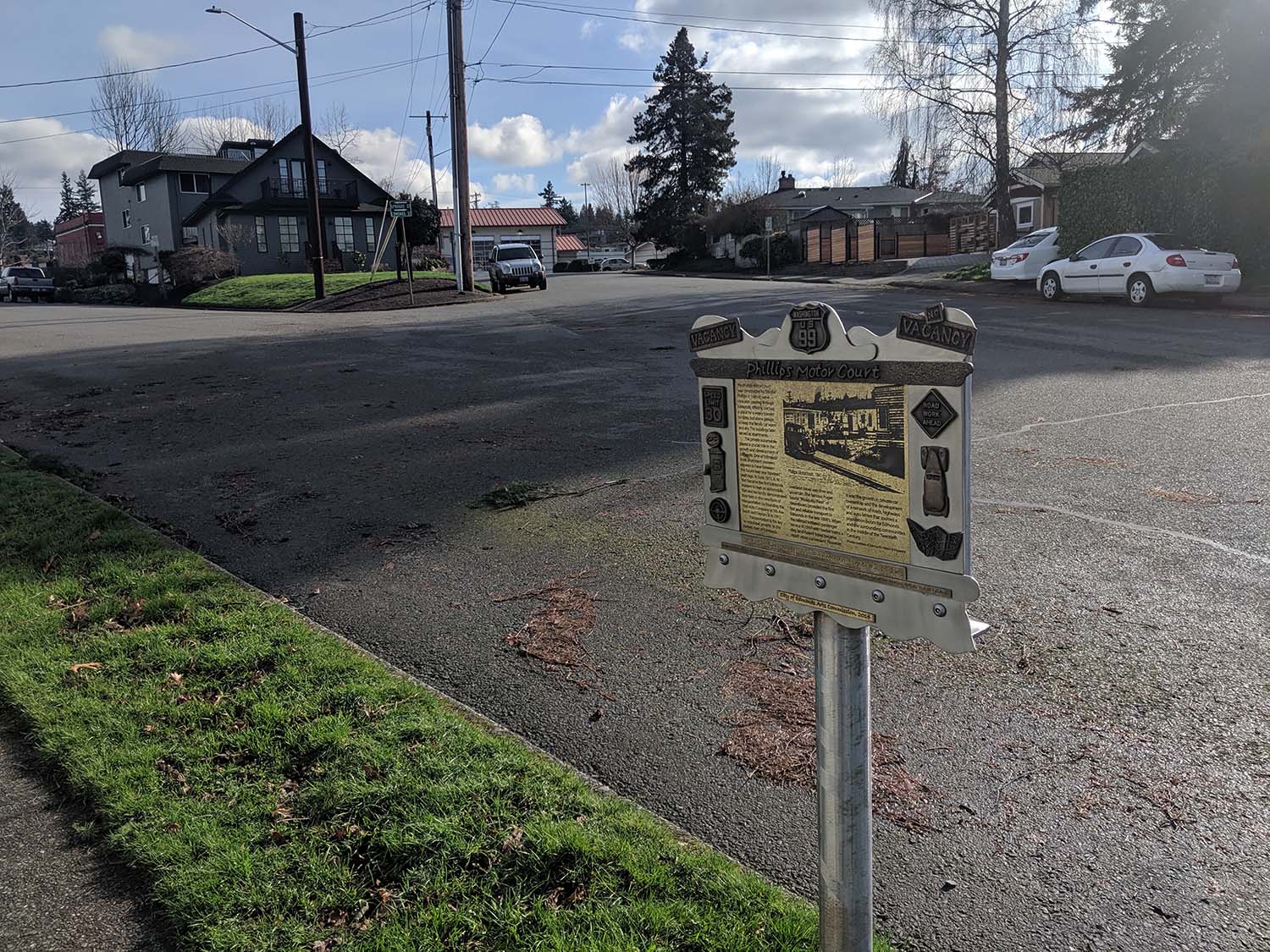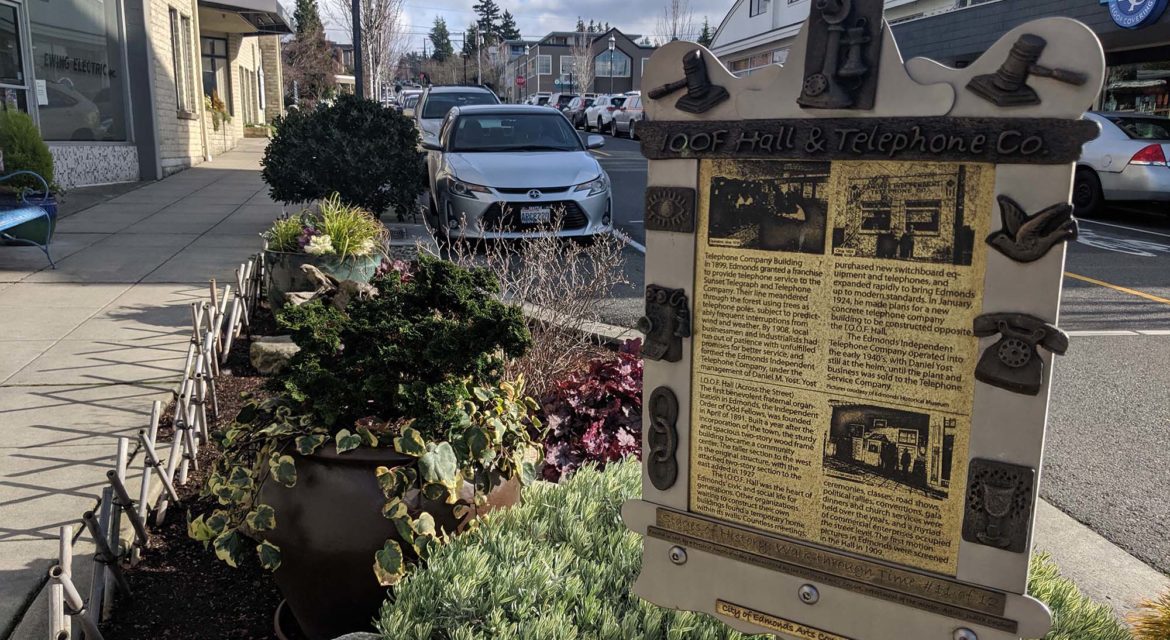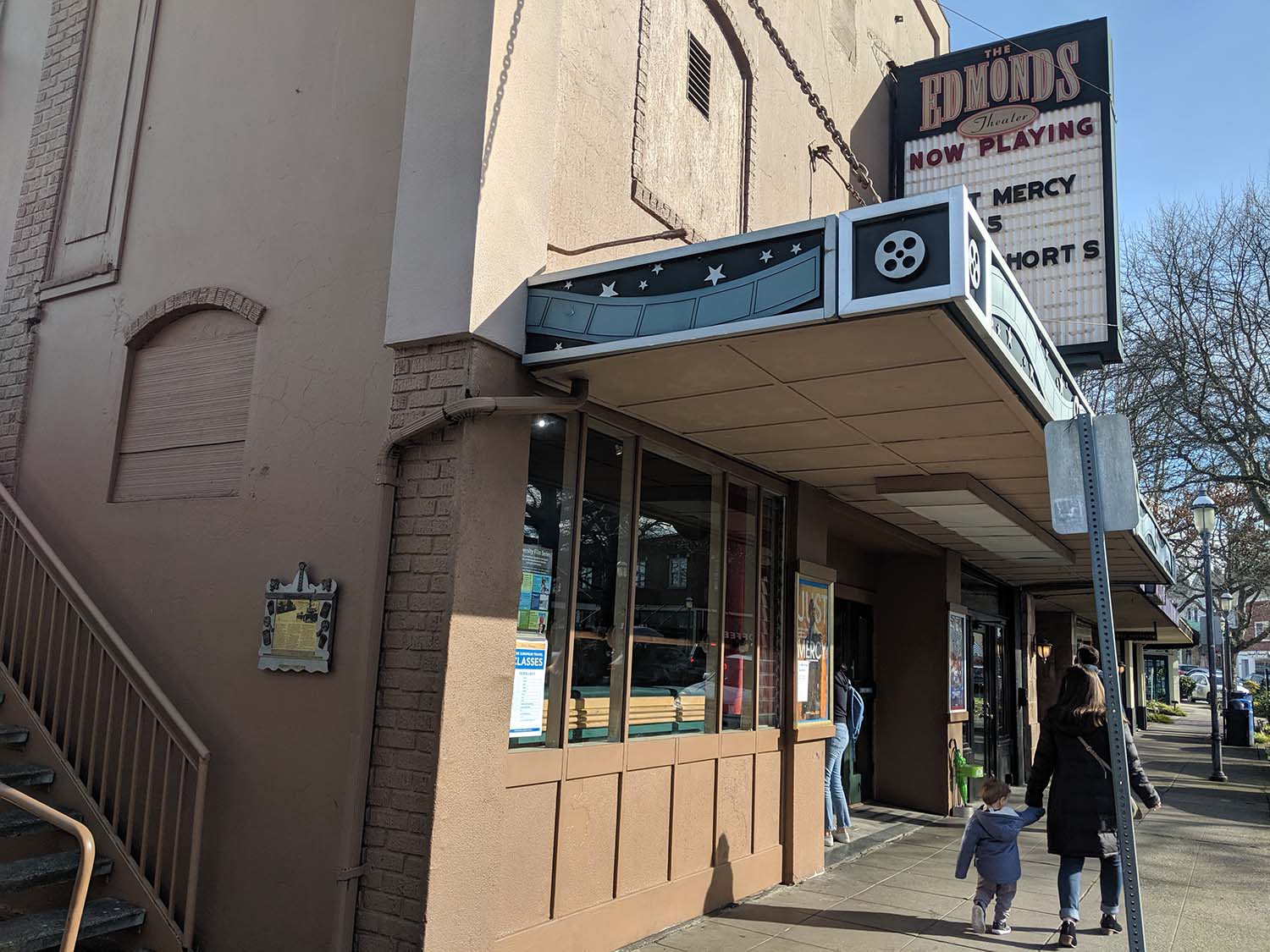 Numerous sculptures and public art experiences highlight the history and culture of a city or region, but the subtle way in which the past combines with the present on the “Stages of History” tour in Edmonds, Washington, is especially unique. This public art experience showcases twelve significant sites in Edmonds’ evolution from a small logging community to a center of commerce and culture in Snohomish County.
Numerous sculptures and public art experiences highlight the history and culture of a city or region, but the subtle way in which the past combines with the present on the “Stages of History” tour in Edmonds, Washington, is especially unique. This public art experience showcases twelve significant sites in Edmonds’ evolution from a small logging community to a center of commerce and culture in Snohomish County.
Artist Judith Caldwell, from Caldwell Sculpture Studio, participated in all phases of the Stages of History project development. This included selecting the twelve sites from a list of proposed locations, originating the concept of the puppet theater stage design for the markers, conducting interviews, contributing historical research, and writing much of the text. The markers, including all of the elements, were fabricated by Judith and her husband, artist Daniel Caldwell, in their studio. Judith’s efforts to visually tell the story of Edmonds have resonated with audiences and stakeholders on multiple levels.
The subtle nature of the project highlights how local history can be celebrated in a meaningful way to both residents and visitors. It’s the sort of project that can be enabled with the proper support but also needs to be considered in terms of the opportunities and practicalities that it represents.
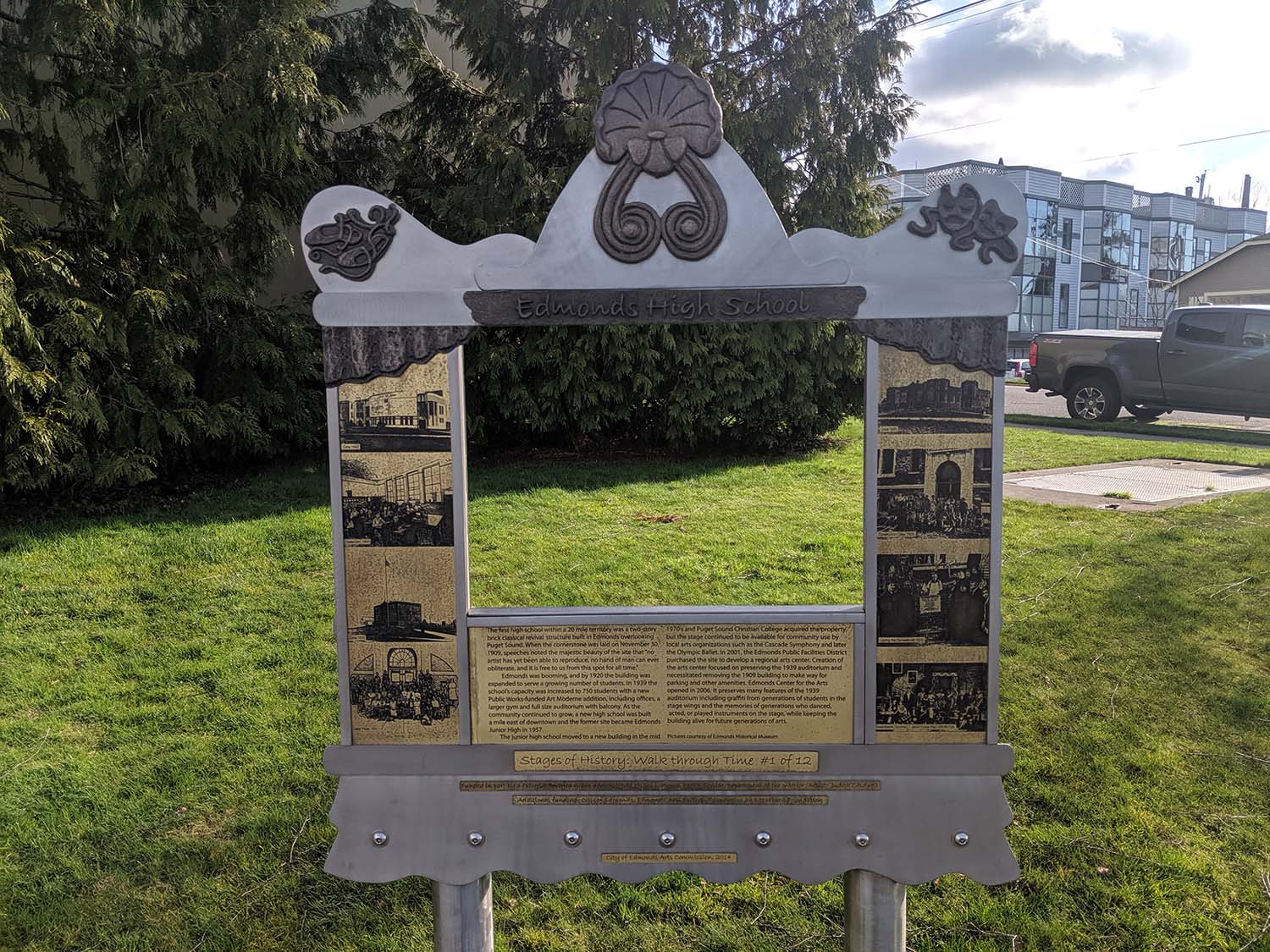
Setting the Stage
Recognizing the unique history that Edmonds possesses, the Edmonds Arts Commission worked with community members and community organizations to outline the parameters for what would eventually become the “Stages of History” tour. Edmonds received partial funding from the National Parks Service for a downtown historical marker project with various entities within the city providing the rest of the funding.
After funding was set, the Edmonds Arts Commission issued an RFQ for the project and Judith Caldwell was the artist selected. She worked with Frances Chapin at the Arts Commission for nearly two years to make the project a reality, turning what had just been an idea to have artist-made historical markers into a fully-formed concept that would allow visitors to tour downtown Edmonds and experience the past of the city while walking through the present.

“I read everything I could find on the City of Edmonds,” said Caldwell. “That meant spending hundreds of hours on research, using libraries, online resources and the Snohomish Historical Society. At some point, I discovered Larry Vogel’s historical articles in the Edmonds Patch. His articles were so clear and well written that I contacted Mr. Vogel and asked if he would be willing to allow me to use some of his text in the “Stages of History” panels. I wrote a fair percentage of the text, but his words from his Patch articles do form a significant part of the histories.”
The Edmonds Patch is the local version of the network of digital Patch ‘newspapers’ serving communities across the United States. Caldwell’s efforts to understand this history are reflected in the images and icons that define each of the “Stages of History” markers.
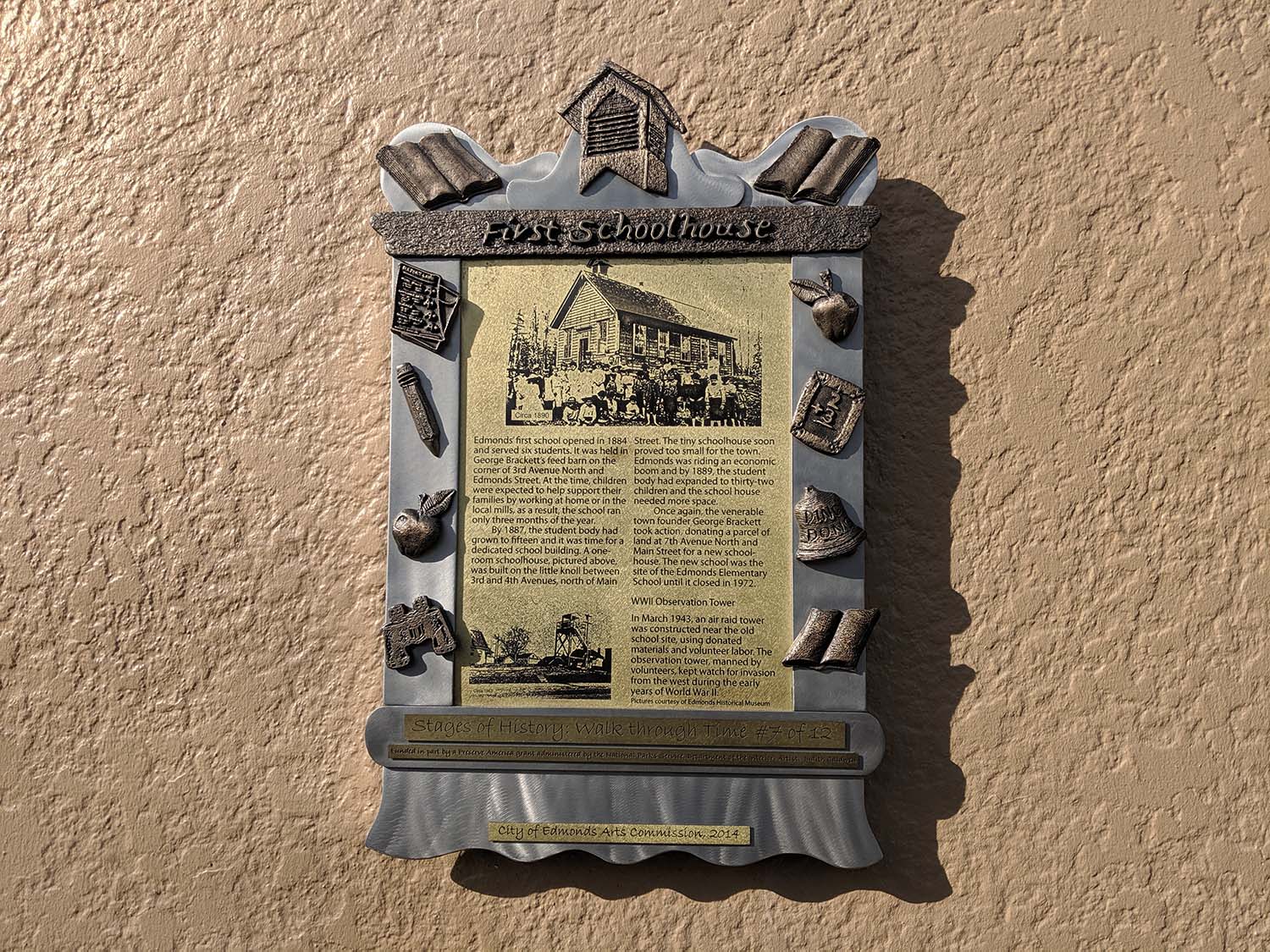
The Icons of Edmonds
Tour sites across “Stages of History” include the First School House, Princess Theater and Fifth Ave & Main Street, just to name a few. All twelve of the tour sites feature markers that have pictures and text that outline the history which is surrounded by bronze icons and imagery created by Caldwell. They utilize a puppet theatre design that is most evident in the Edmonds High School tour marker. The design for this and all of the markers arose out of Caldwell’s thinking about small scale, street-level entertainment.
Selecting these sites as well as the imagery associated with each was a careful process. How the history and culture of the city would be represented was considered from multiple perspectives but there was also a great deal of thought put into each site, design and individual icon.
“The history of each site or location was researched individually and extensively for stories that could be expressed in an icon,” Caldwell told The Monumentous. “The text on the panels explain how the icons relate to the site, and help to show that a particular place was once a bank or a newspaper office, or that the theater located here was once across the street.”
Bronze images of a pill bottle, doctor’s bag and a pair of umbilical scissors reference the many activities associated with buildings near the Doctor’s Offices marker. The bronze icons on the Philips Motorcourt panel includes a steering wheel, the view of a 1930s era car from above and a Highway 99 Road Marker. Not all of the markers use their imagery in the same way, though.
 The marker in the heart of downtown Edmonds features a bronze portrait of Edmonds founding father, George Brackett. Icons of a dog and a bull flank the portrait and the text includes an account of how these animal constituents were reportedly added to the 1889 area census in order to attain the minimum number of citizens required to qualify for a city charter and to officially incorporate. It’s an example of how the history of the area is expressed visually rather than strictly in text.
The marker in the heart of downtown Edmonds features a bronze portrait of Edmonds founding father, George Brackett. Icons of a dog and a bull flank the portrait and the text includes an account of how these animal constituents were reportedly added to the 1889 area census in order to attain the minimum number of citizens required to qualify for a city charter and to officially incorporate. It’s an example of how the history of the area is expressed visually rather than strictly in text.
Whether or not audiences understand all of this history and context, they can appreciate icons like the one of Sputnik from the Fourth Avenue North Houses, which was drawn from the personal history of one of the residents who remembered everyone coming out of their houses and congregating in the street on Fourth Avenue, and all looking up together to see Russian satellite sailing by overhead. These bronze images have the potential to form a powerful bond between the audience and the history of Edmonds.
Each stop on the “Stages of History” tour represents a profound way to create experiences for residents and visitors. Other cities and stakeholders could enable similar experiences with works of public art, but doing so is a matter of both commitment and recognizing what kind of opportunities can be associated with such efforts.
Showing the Past to Benefit the Future
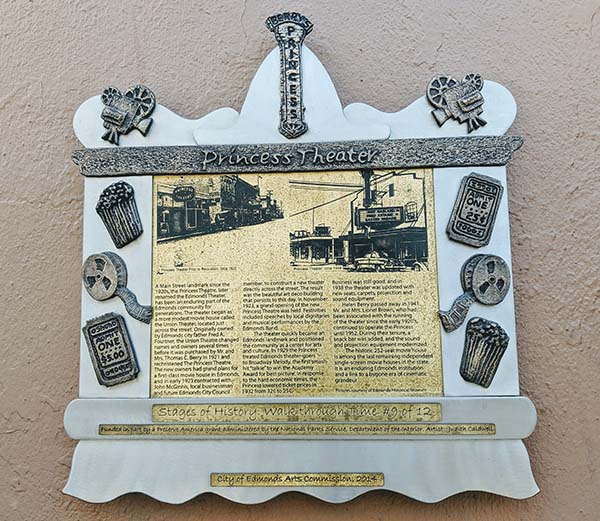 Edmonds has been able to highlight the history of the city in a profound way that residents and visitors can appreciate on different levels. As an additional means of engagement, the bronze images featured in each marker could be integrated into various places across the town, included on walls and in the street. Some of these icons could also be utilized to help form a path from one stage to the next.
Edmonds has been able to highlight the history of the city in a profound way that residents and visitors can appreciate on different levels. As an additional means of engagement, the bronze images featured in each marker could be integrated into various places across the town, included on walls and in the street. Some of these icons could also be utilized to help form a path from one stage to the next.
Those kinds of opportunities for expansion depend on the project being properly maintained though. Projects that are both weather and vandal-proof while also being able to look good for decades are not inexpensive. Luckily, funding for public art can come from multiple places, and the “Stages of History” tour was a collaborative project that was partially funded by a grant from the Department of Interior. Others can petition the National Parks Service to learn about the availability of similar funding.
However, it’s not just stakeholders that need to consider how such projects can be enabled. Funding might be the issue that gets an idea off the ground, but compelling communities to support it and offer more robust financial support often requires the inspiration that only a committed artist can provide. Artists themselves can play an active role in the process to make such projects a reality, just as Caldwell did.
“Artists need to have a sincere interest in local history and have access to broad historical resources, including photographs and personal and institutional histories,” Caldwell said. “Additionally, projects like these are greatly benefitted by having a good city arts commission, which is what Edmonds has.”
Public art experiences like the “Stages of History” tour are often the result of multiple individuals and organizations coming together to work toward a common goal. This project showcases that such efforts don’t need to be especially large or obvious, but can instead encourage engagement in understated ways.
Whatever the approach, enabling these sorts of projects needs to be the result of a commitment to seeing that the history of a community or region is continually maintained while also recognizing how doing so can open up many different opportunities throughout the community.
